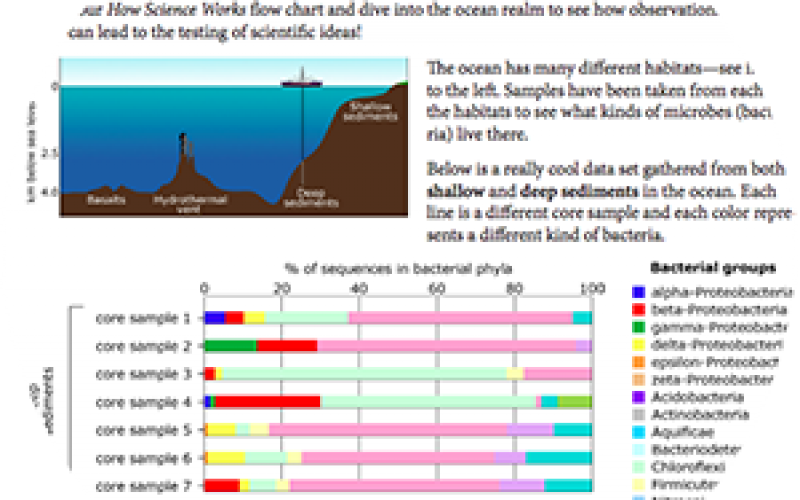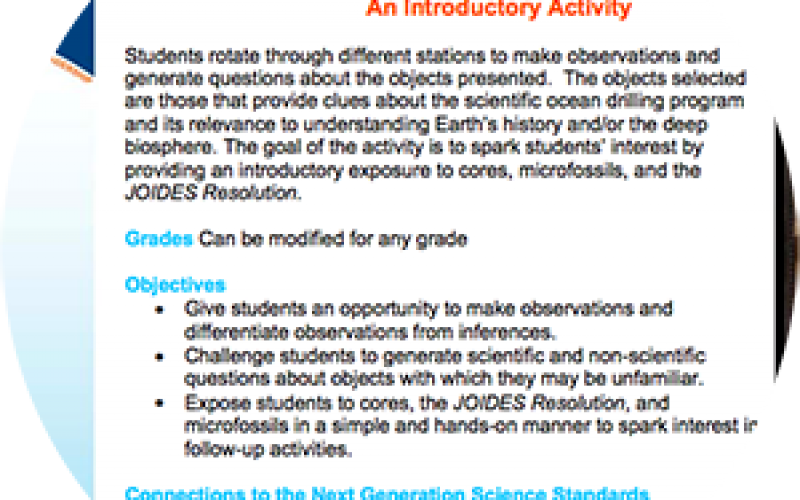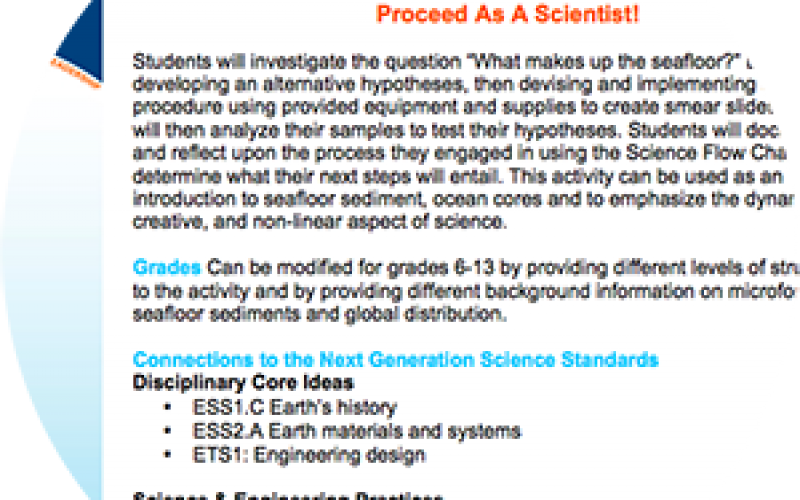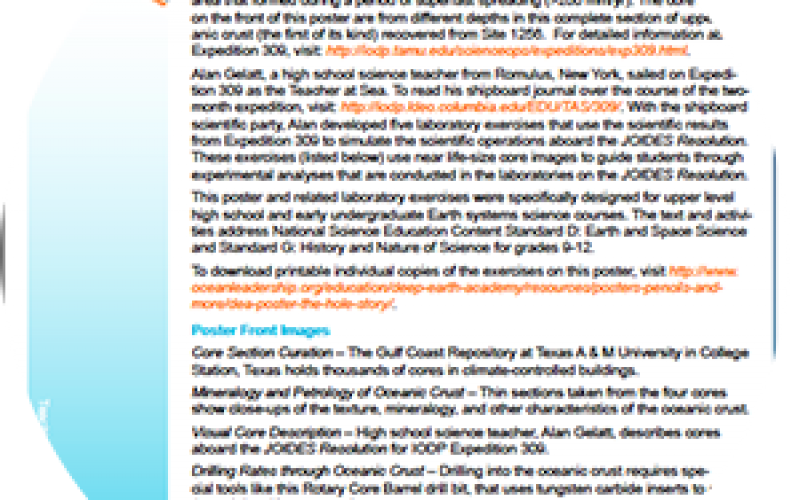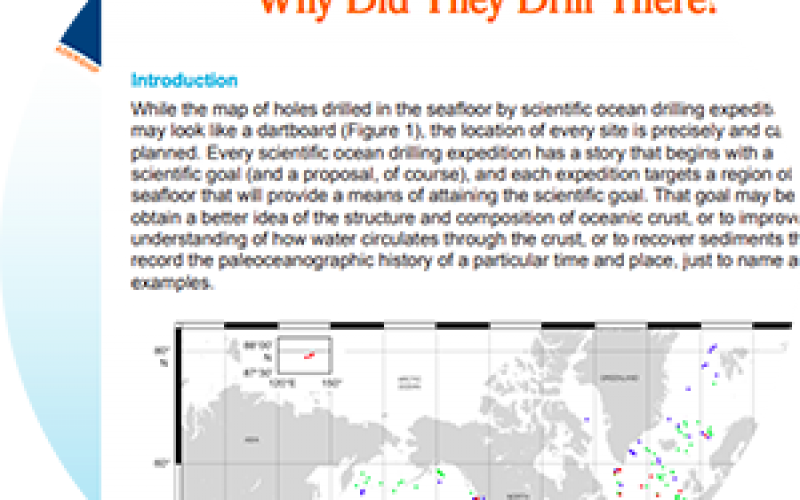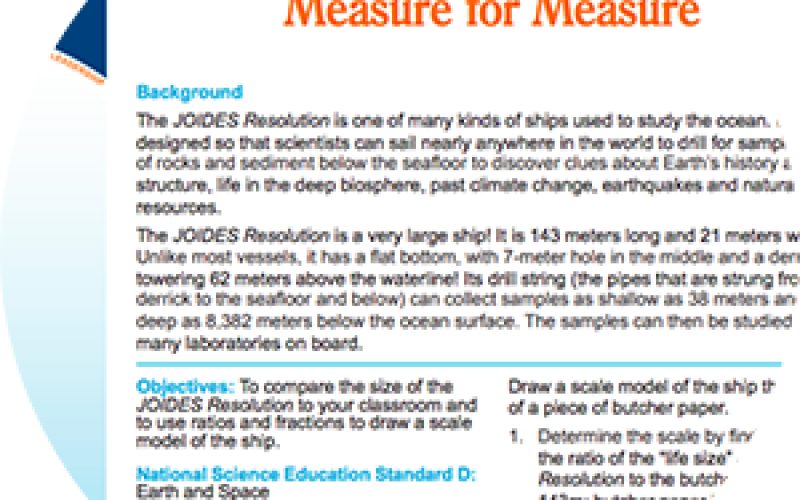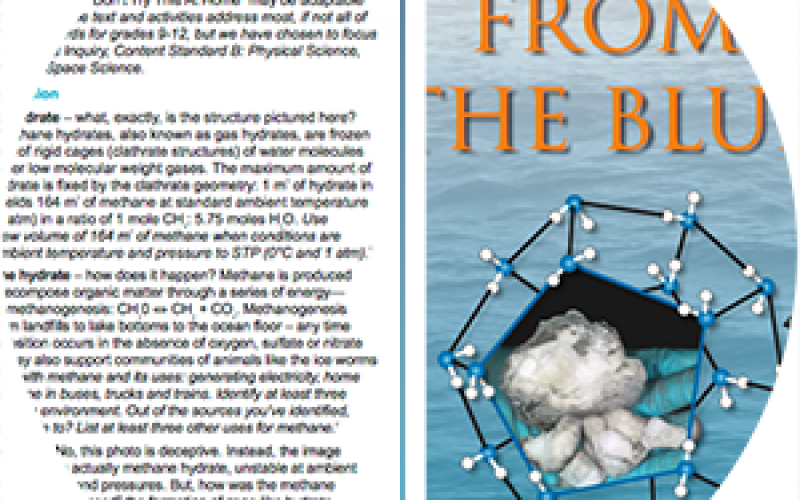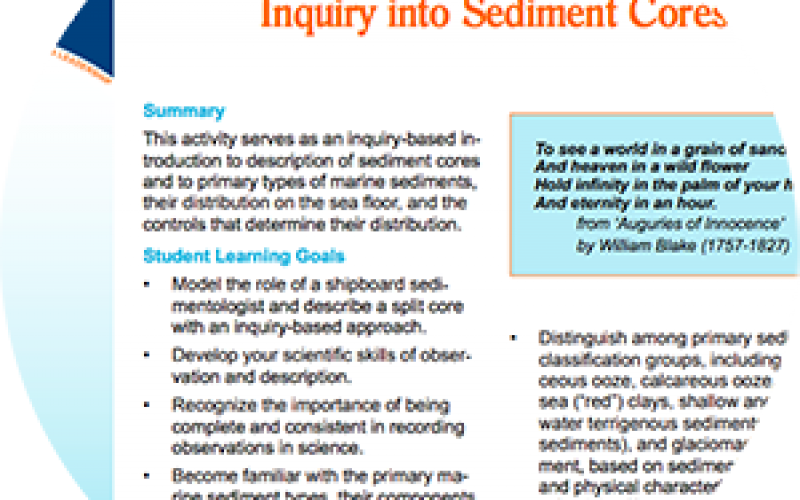Present students with this data set of microbial phyla from the deep biosphere and guide them to identify patterns then form and test multiple hypotheses about the questions they generate. Then they reflect on the elements of "doing science" they experienced and use the Science Flow Chart to document the process they engaged in and share what they would do next.
The “Hole” Story About Ocean Cores will introduce your students to core description and curation techniques used by scientists and technicians during Integrated Ocean Drilling Program Expedition 309. Lab groups can work together to examine high resolution photos and data from four cores taken at various depths in this first-of-its-kind complete section of oceanic crust.
The question “Why Drill there?” is addressed at multiple levels, so students can experience the scientific rationale behind drilling the sea floor at a particular location. A subset of research results are also investigated and compared with the current scientific paradigm on Cenozoic climate evolution to demonstrate that science is an evolving process.
Notes:
This activity was written for School of Rock participants and assumes the learners have access to Leg 198 cores at the Gulf Coast Repository. The activity can, however, be useful in your setting through simple modifications and the use of online resources.
The common minerals that make up most of the oceanic crust are called rock-forming minerals. They come from the upper mantle…
Utilizing a series of clathrate structures, the poster reveals new windows of scientific research currently being performed in the complex study of gas hydrates. By visualizing the face of each clathrate structure through an image, the poster simplifies chemical concepts, enabling students to learn
A student version of the activity and thumbnail images of the cores referenced in the activity can be downloaded below.
